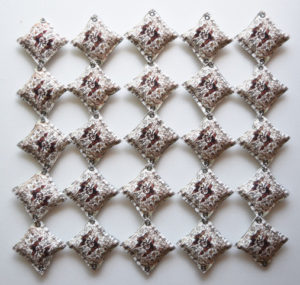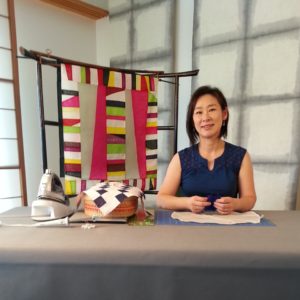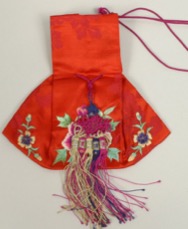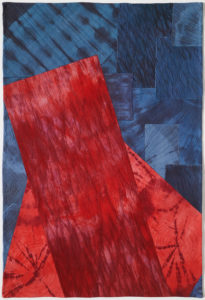
“Korean Voices in Fiber: Translating Tradition into Contemporary Art” highlights the ancient heritage of fiber art in Korea as well as its vibrant modern transformation of both traditional and unexpected techniques and materials. This show is an opportunity to be introduced to a particular aspect of Korean artwork as part of our worldwide culture of textile arts.
There are 25 artists represented. Many are award winners whose works have been exhibited internationally. Some are also respected designers and professors. Sonoma-based artist Mirka Knaster brings this exhibit to Gualala Arts Center to introduce interesting and beautiful aspects of Korean culture and art to an American audience after she experienced them first-hand in Korea.
Knaster said she tasked the artists to find something in their cultural heritage for inspiration of a contemporary art piece. According to Yoonkyung Kim, her entry “Meditation” is an interpretation of the Korean flag. “In using the traditional Korean colors which are part of the Korean flag and bangpai-kite, I am trying to express peacefulness and simplicity. The white background of the flag means peace. The red and blue circle in the center is called Taegeug, the origin of all things in the universe. The central thought is perfect harmony and balance: A continuous movement within the sphere of infinity, resulting in one unit. The blue part of Taegeug is called Eum or, in Chinese, Yin, and represents all negative aspects of the balance, while the red part is called Yang and describes all the positive aspects.”
Each contemporary piece will be accompanied by an image of the traditional item that inspired the work, along with an explanation in English and Korean.
If you love art, in general, and textiles and handmade paper, in particular, you will enjoy learning about an Asian culture that stretches back thousands of years. Please join us as we explore traditional and contemporary fiber art from Korea.

During the reception on Friday, October 6, Bay Area Korean textile artist and instructor, Youngmin Lee, will give a demonstration of bojagi to help generate understanding of how certain items have been made since ancient times.
Bojagi is a traditional Korean wrapping cloth, typically square and made from a variety of materials, most commonly silk or ramie. Embroidered bojagi are known as subo, while patchwork or scrap bojagi are known as chogak bo.
Bojagi have many uses, including as gift wrapping, in weddings, and in Buddhist rites. More recently, it has been recognized internationally as both a traditional art form and an inspiration for modern reinterpretations.

Mirka was born along the Adriatic Sea and educated in the U.S. on both coasts, where she earned degrees in Romance Languages, Latin American Studies, and Asian Comparative Studies. She has lived in the Andes, Blue Ridge Mountains, and Hawaiian Islands, and traveled far and wide. Her contemporary textile creations have been in national and international exhibits. A published author, she writes an art blog that includes posts on fiber art. mirkaart.com/
Youngmin grew up in Korea, where she earned a master’s degree in fashion design and a bachelor’s degree in clothing and textiles. She has presented numerous workshops, classes and demonstrations on Korean arts and crafts in the Bay Area, including at the Asian Art Museum of San Francisco and Oakland Museum. Her textile work is regularly commissioned and exhibited. youngminlee.com/


 Gualala Arts Promoting public interest and participation in the arts since 1961
Gualala Arts Promoting public interest and participation in the arts since 1961